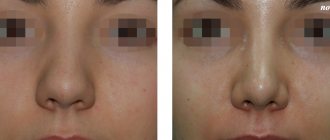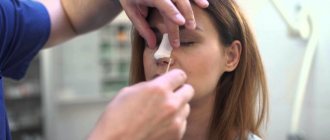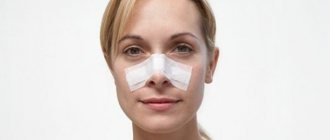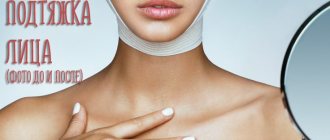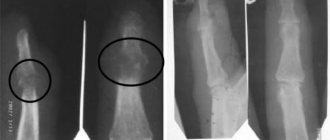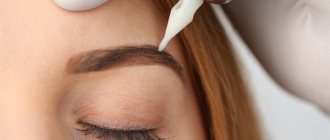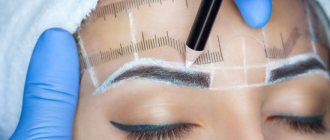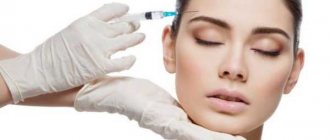Types of nose correction
Depending on the purpose of the operation and the surgical techniques used, the following types of rhinoplasty are distinguished:
- septoplasty - correction of the nasal septum aimed at eliminating deformation, curvature, and developmental abnormalities;
- open rhinoplasty - surgical access is carried out along natural skin folds;
- closed rhinoplasty - surgical access is carried out from the mucous membrane, due to which there are no visible scars left after rhinoplasty;
- non-surgical nose correction - correction of minor cosmetic defects without surgical intervention by injecting special preparations under the skin.
Reno after 50
My story began a long time ago, in my youth, when we knew nothing about plastic surgery. I had everything like everyone else: college, placement, work, marriage. After the birth of my son, I began to stay at home and raise the child. Everything was wonderful with my husband, he doted on me and the child. I must say that there were enough fans even before marriage. Those. there was no reason to drive myself into complexes. But I really didn’t like something about my own appearance—my nose: long, drooping, with a slight hump. No, he was not ugly, but it was the only part of his body that irritated me terribly. I didn’t share my experiences with my friends. I told my husband once, he smiled and said that he loved his fool. In general, there was no problem as such, but there was discomfort in self-perception.
The years of perestroika and the hungry 90s came: everyone had the same task - to survive. I was spinning around as best I could, trying to make money. My husband was laid off at that time, and I had to take on the role of breadwinner. This went on for about 7 years. In the early 2000s, everything finally got better: my husband and I got stable jobs, despite our age (we were both already over 50). At that time, my son was already firmly on his feet and helped very well. Live and be happy. But then I remembered my old dream of improving my appearance. By that time, plastic surgery had become quite accessible.
I started collecting information and going to consultations. The main problem, of course, was age - some surgeons refused immediately, without even starting a conversation. But after searching for six months, I finally found “my” surgeon. The clinic was not the most famous, the price of the operation was rather high, but the doctor immediately instilled unconditional trust in me. I showed two patients my age, whose results I really liked. And I made up my mind.
I didn't tell anyone about the operation. Even my husband. I bought the time when he would leave for the dacha and went to the operating table. I was prepared for the horrors of rehabilitation, but strangely enough, everything went smoothly. I came to my senses quite quickly, and after 2 weeks the only reminders of the operation were bruises, which I carefully disguised. Now I couldn’t take my eyes off my nose: my face became more regular and, as it seemed to me, I had shed five years off. My husband, seeing me in a new look, was speechless. He said that he would never have let me in if he had known. But then he admitted that he fell in love again.
I am sure that all restrictions (including age) are conditional. Of course, there is a risk, but it exists in the case of young people. I took a risk and was right.
After nose correction
The postoperative period requires a lot of patience and self-discipline. In the first days after rhinoplasty, there is severe swelling of the nose and lower eyelids, difficulty in nasal breathing and pain. In order to fix the changed shape, a plaster bandage in the shape of a butterfly is applied to the nose, and turundas are inserted into the nasal passages.
In the early postoperative period, physical activity is contraindicated, you cannot wear glasses, you cannot sleep on your stomach, or sunbathe in the sun or in a solarium. Anti-inflammatories and cold compresses can be used to reduce discomfort and swelling.
If all recommendations are followed, the plaster is removed after 7-10 days. Swelling in the eye area goes away within 10-14 days, and you will be able to evaluate the aesthetic result of the operation 3-4 months after rhinoplasty.
Features of nose correction after a fracture
The CONSTANTA Clinic offers a broken nose correction service that solves two problems:
- Returning bones to their correct position;
- Restoring the functionality of impaired nasal breathing.
Before the operation, our specialists relieve the patient’s pain shock, swelling, and stop bleeding. The fracture site is numbed by irrigating the nasal cavity with an anesthetic compound and injecting it with a syringe. If there are a large number of fragments, after reposition, tampons with paraffin are inserted into the nasal cavity for proper fusion of bones.
Reduction if treated in a timely manner
A fresh injury does not require procedures in the operating room or general anesthesia. When a patient breaks his nose and promptly seeks medical help from our Clinic, a specialist in the ENT office can straighten it under local anesthesia. The doctor performs the adjustment from the outside with his fingers, acting inside the nose with a special instrument (an elevator or tweezers, the ends of which are protected by a fabric wrap and a rubber tube). After the necessary procedures and application of a protective bandage, the patient can immediately go home.
But even with timely medical help, non-surgical correction of a broken nose is not always possible. Indications for surgery are:
- post-traumatic deformation of the outer part of the nose;
- severe damage to the walls of the sinuses and soft tissues;
- fracture, curvature of the nasal septum, requiring anesthesia and major surgery, including implantation;
- extensive hematomas in the septal area, which must be drained to eliminate the risk of necrosis of cartilage tissue.
Correction of the nose for an old injury
If you did not have time to see a doctor in the first weeks after the injury, the fracture has already begun to heal, and healing often occurs at the wrong point. This is fraught with impaired free breathing and a number of aesthetic problems:
- displacement of the nose to the side;
- hump on the back;
- a hole in the bridge of the nose.
Our Clinic successfully treats nasal fractures even years after the injury. The surgical operation in this case is a complex process performed under general anesthesia over several hours.
Stages of surgical correction of the nose after an old fracture
| STAGE I | STAGE II | STAGE III |
| Osteotomy | Restoring the correct position of the bones | Aesthetic rhinoplasty |
| Through incisions in the skin, the surgeon gains access to the improperly fused bones of the nose and carefully breaks them | The doctor manually restores the normal position of the fragments using elevators | Nose surgery may include eliminating a hump or pit, narrowing the back, wings, tip of the nose, correcting the area of skin between the nostrils, etc. |
How to restore the nasal mucosa correctly and without consequences
Irritation of the nasopharynx and the resulting inflammation of the nasal mucosa leads to chronic rhinitis.
Patients try to treat this disease in a variety of ways. This includes the use of vasoconstrictor drops, treatment of a runny nose with rinsing, various folk remedies and pharmaceutical preparations. If the restoration of the nasal microflora does not proceed correctly, inflammation of the mucous membrane becomes a chronic disease. The patient experiences bleeding, severe burning, and specific crusts appear in the nose, which impair the sense of smell and quality of life in general.
The use of drops for recovery is permissible only for one week - then the body gets used to these drugs and the treatment is ineffective. How to help the nasal mucosa after drops and which methods are most effective?
Vibrocil is actively used if there is irritation of the nasopharynx as a result of allergic reactions.
Diagnosis of the problem
Only an otolaryngologist can identify the disorder and make the correct diagnosis. He performs rhinoscopy, carefully examining the mucous membranes with an endoscope. This is a thin tube with a camera attached to the end. The procedure itself is painless, but may cause mild discomfort. Diagnosis of the cause is mandatory. For this purpose the following is carried out:
- study of the concentration of main hormones;
- ECG and other methods for studying the condition of blood vessels and the heart;
- Ultrasound of the abdominal organs;
- psychological diagnostics.
study of the concentration of main hormones;
How to restore the nasal mucosa?
The main thing in the process of restoring the nasal mucosa is to start it as early as possible. There are simple and inexpensive means for this.
Moreover, if mucus drains into the nasopharynx, a reflex wet cough may begin 4.
What does traditional medicine offer?
You can moisturize the dry mucous membrane of the nasopharynx at home. To do this, it is enough to use special medications that are freely available in pharmacies.
In order not to make a mistake in choosing a medication, it is recommended to first undergo examination by a specialist. He will identify the exact cause of the ailment and select the most effective medicine for a particular patient.
Treatment of dry nasal mucosa is carried out with the following medications:
- Ointments.
- Spray.
- Drops.
- Solutions for inhalation.
In some cases, changing the microclimate at home or changing the workplace helps to completely get rid of the painful condition. A patient has to take such measures if his illness is caused by inhalation of harmful substances contained in the air.
Dryness and irritation in the nose may well be caused by prolonged exposure to a cold room or excessive dryness of the air and its oversaturation with dust, as well as other small particles that act as an irritant.
In children, the nasopharynx usually becomes dry due to the fact that they have to breathe through their mouth. Nasal breathing may be impossible for them due to the appearance of adenoids or a cold.
Proven medications help restore normal microflora in the nose and eliminate signs of irritation and dryness:
- " Saline ". The basis of the medication is a 65% solution of table salt. It is sold in pharmacies. This solution can also be easily made at home. The drug helps relieve inflammation and swelling of the mucous membrane. Additionally, it has an antiseptic effect.
- " Derinat ". This is a drug from the group of immunomodulators. It helps improve the body's protective properties and accelerate the regeneration of damaged tissues. The medicine effectively copes with the signs of dryness. Already after the first application, the patient’s impaired sense of smell returns.
- " Delufen ". The drug eliminates inflammation of the nasal mucosa, dryness and swelling. The drug also has a homeopathic effect. It is recommended for most patients who complain of dry nose due to its absolute harmlessness. Quite often it is used to treat various forms of rhinitis.
- " Pinosol ". It not only effectively treats nasal congestion, but also quickly restores its mucous membrane. The remedy is made from natural oils of pine, eucalyptus and peppermint. Therefore, it is used to moisturize the nasopharynx and soften it. "Pinosol" destroys pathogens that can multiply in this part of the respiratory system and returns the lost sense of smell.
Methods of carrying out
There are aesthetic and reconstructive rhinoplasty. Each of them has its own characteristics.
Aesthetic rhinoplasty involves the correction of the nose given by nature. You can change its shape and size. It is done using the full, partial, open or closed method.
Full rhinoplasty involves bone, cartilage and soft tissue. It is suitable for reducing the length or width of the nose, removing a hump or changing the saddle shape.
Partial surgery is performed to correct the shape of the nose. The surgeon treats only some of the outer areas of the nose. It does not affect bone tissue. This type of plastic surgery is suitable for correcting the tip of the nose or reducing the wings if it is possible to do without full plastic surgery, but this decision is made by the doctor after a full examination.
On this topic
- Rhinoplasty
What is rhinoseptoplasty
- Editorial board of Plasticology.ru
- July 8, 2020
With the help of reconstructive rhinoplasty, the problem associated with difficulty breathing is solved. The surgery restores the appearance of the nose that was damaged or lost (partially or completely) during injury.
The procedure is performed if it is necessary to correct a congenital deformity of the osteochondral skeleton of the nose. In severe cases, the surgeon may need to use auricular cartilage or costal cartilage, as well as artificial substitutes.
Special cases
These include 2 types.
Injuries
The operation is prescribed in case of impaired nasal breathing in the post-traumatic period. The main task of surgeons is to correct the nasal septum and normalize the passage of air through the nose. The most commonly performed procedures are rhinoplasty and septoplasty.
Male nose job
Differs from plastic surgery on the nose in women. Taking into account the anatomical features, the male nose should be proportional to the shape of the face and have a geometric structure. There are no differences in anatomical structure. The only difference is the shape and size.
Symptoms of a fracture and indications for surgery
It is important to identify a nasal fracture soon after the injury occurs. The most reliable sign is visible deformation of the bones, as well as their significant displacement or the ability to see them in an open wound, but if the injury is not severe, it will not be possible to determine the presence of a fracture by eye.
Symptoms of a fracture also include:
- Nosebleeds and hematomas in the nose and eyes
- Swelling of the nose
- Difficulty breathing
- The appearance of red veins on the eyeballs
- Recession of the nose inward (with damage to the septum)
- A characteristic crunch of bones upon palpation, called crepitus
Important! This symptom should only be checked by a specialist, otherwise irreparable harm to health can be caused.
To unambiguously determine the injury , an X-ray, rhinoscopy or MRI are prescribed. To determine the severity of harm, the circumstances of the injury, associated injuries, and the severity of the bleeding are taken into account. It is worth remembering the possible infection of the wound with an open fracture, as well as long-term consequences, for example, loss of smell.
To provide first aid to the patient, it is necessary to apply a cold compress (if possible, through an antiseptic bandage), as well as placing the victim in a position in which his head and body are slightly tilted forward to prevent blood from flowing down the respiratory tract. It is necessary to transport the victim to the emergency room as soon as possible.
To treat a fracture, bone repositioning may be prescribed - an operation during which bone fragments are moved into place by a traumatologist.
Undoubted indications for surgery are noticeable displacements:
- A displacement of the nasal septum to the left or right indicates rhinoscoliosis;
- Partial retraction of the nasal bridge is called rhinolordosis;
- Platyrinia is manifested by pressing the nose inward, making the nose shorter and wider;
- Formation of an obvious hump;
- Damage to the sinuses or deformation of the external nasal passages
Contraindications for rhinoplasty
Like any other surgical intervention in the human body, nose correction carries its own risks, complications, pathologies and defects, which can significantly spoil the quality of life. That is why the most important component of preparation for surgery is to examine the patient for contraindications to rhinoplasty. All these factors are divided into two types:
- Relative, that is, those that can be corrected, cured, waited out;
- Absolute, which cannot be cured.
Let's look at these categories in more detail to understand what and how can affect the operation.
Relative contraindications
Relative factors include inflammation, viruses, infections or other factors that temporarily limit rhinoplasty. Due to numerous advertisements, people simply no longer understand that even such a seemingly small correction in terms of area of influence can lead to disastrous results if there are factors that interfere with its implementation.
Temporary ones can be cured or “waited out.” When the factor is eliminated, the person must be examined again. Such contraindications for rhinoplasty include :
- Inflammatory diseases of the ENT area: frontal sinusitis, rhinitis, sinusitis, otitis media, tonsillitis and so on. That is, inflammatory processes caused by certain factors. This is especially true of the nasal passages, sinuses and mucous membranes, when the discharge of secretions is difficult due to swelling.
- Viral or infectious diseases such as acute respiratory viral infections, acute respiratory infections, rhinovirus, adenovirus, rotavirus infections, typhoid fever, herpes simplex and others.
- Dermatological inflammatory processes: acne, carbuncle, erysipelas, folliculitis and so on. This is especially true for the area where the operation will take place.
- Age: under 18 years of age, surgery cannot be performed without serious medical indications. The tissue is still developing, which can lead to the new shape of the nose changing over time, and for the worse. Also, you should not perform surgery after 50 years, when tissue regeneration, as well as general health, noticeably deteriorate.
- Menstruation. During this period, there is a special surge of hormones in the body, as well as renewal of some tissues in the reproductive system. Surgery can have a negative impact on the body and provoke unnecessary complications for the patient.
These diseases can be cured, and in most cases the factors can be waited out. In the case of people over 50 years of age: here the patient acts at his own peril and risk if the doctor agrees to perform plastic surgery. Contraindications to rhinoplasty of the nose in this case require time to be eliminated, and therefore you can wait until the moment when the body has fully recovered.
Absolute contraindications
This category includes serious diseases in acute or chronic form, as well as mental disorders that are impossible or extremely difficult to influence. For such indications, surgery cannot be performed.
Contraindications to rhinoplasty include disturbances in the functioning of the internal organs of the immune, cardiovascular system and central nervous system, as well as other organs. This is due to the fact that during rehabilitation after rhinoplasty of the nose, all these diseases and dysfunctions can enter the acute stage, which will pose a serious threat to the life and health of the patient. The main contraindications include :
- Diabetes mellitus of the first or second type can provoke a diabetic coma after surgery. The disease also significantly affects the wound healing process and can cause a lot of complications.
- In case of heart disease, it is the administration of anesthesia that creates a particular risk. Cardiac arrest and death are possible. The main contraindications of this type include: coronary disease, arterial hypertension, heart rhythm disturbances, and so on.
- Infectious diseases, for example, Epstein-Barr viruses, Ebola, gonorrhea, brucellosis, tuberculosis, aspergillosis, meningitis and so on can cause blood poisoning, abscess with subsequent tissue necrosis and many other negative consequences.
- This category also includes autoimmune, immunodeficiency and allergic diseases, that is, those to which a person’s own immunity can react in an unusual way. These are HIV, cirrhosis, diabetes, hepatitis, systemic lupus erythematosus, leprosy, Graves' disease and so on. Allergic reactions also lead to complications during and after surgery. The most important consequence is anaphylactic shock.
- Chronic liver diseases, such as hepatitis, cirrhosis, hemochromatosis, alcoholic, toxic, chemical damage to the organ, and so on, affect the course of rehabilitation and can cause complications.
- Oncology is the scourge of our time. Let us stipulate that a little stress is enough for the development of this type of disease. And rhinoplasty is a strong stress, which can not only progress the disease, but also provoke the appearance of metastases. Moreover, such interventions in cancer can accelerate the formation of cancer cells.
- Disturbances in the functioning of the bronchi (bronchial asthma, chronic and acute bronchitis) are manifested primarily by inflammatory processes in the mucous surfaces of the organ. The drainage system is already malfunctioning and as a result, the discharge of secretions is difficult. This group of diseases is dangerous for two reasons: the introduction of anesthesia can provoke closure of the larynx and bronchi, and during the rehabilitation period these diseases become noticeably worse and can affect the final result of nose correction.
- Bleeding disorders impair the healing process of wounds, and with particularly low levels there is a risk of bleeding.
- A number of mental illnesses are contraindications to rhinoplasty. These include dysmorphophobia, when the patient is never satisfied with his appearance, even if the rhinoplasty was flawless.
These are absolute contraindications for rhinoplasty. These factors cannot be bypassed or waited out, and therefore if you are diagnosed with any of the listed diseases, we recommend that you refuse the correction. This way you will save your health, and in some cases, your life. In order not to be unfounded, statistics show that many such patients after plastic surgery received completely unsatisfactory results. Moreover, these factors ultimately influenced the appearance in such a way that the shape or length of the nose changed to a much worse extent than it was before the operation. In certain cases, it is worth considering special rhinocorrectors for the nose, which will alleviate the problem.
How to restore the nasal mucosa
The nasal mucosa is more often exposed to negative factors that can cause damage.
As a result, it ceases to cope with its functions and causes discomfort.
There are specific medical recommendations on how to restore the nasal mucosa, there are targeted medications, as well as many folk methods to solve the problem.
There are specific medical recommendations on how to restore the nasal mucosa, there are targeted medications, as well as many folk methods to solve the problem.
Carrying out the operation
The duration of the operation depends on which method was initially chosen and how complex it will be. Usually everything takes about two hours.
On this topic
- Rhinoplasty
Features of playing sports after rhinoplasty
- Editorial board of Plasticology.ru
- June 19, 2020
Plastic surgery begins with making an incision through the skin of the vestibule of the nasal mucosa. Next, the surgeon corrects the tip of the nose, sometimes changing the height of the nostrils and the width of the base. After removing the hump or giving the desired shape, the final stage of adjustment is carried out using cartilage. They can be homemade or canned.
It should be understood that after carrying out a set of actions during surgery, the nose may change. No doctor can give an accurate prognosis.
Folk remedies and methods of treatment
Traditional medicine knows exactly how to restore the nasal mucosa.
Bees are our irreplaceable helpers in this matter. Their waste products: honey and propolis are practically a panacea for those who want to help the mucous membrane of their nose using exclusively natural means. And, of course, let's not forget about aloe.
Propolis tincture with cow's milk
Grind 50 grams of propolis. Then pour in 500 ml of hot boiled cow's milk and mix thoroughly for 7-10 minutes. If possible, we recommend using a wooden spoon. Then strain the resulting medicine and let it cool. It should be stored in the refrigerator. Place warm drops into the nose.
Propolis tincture with alcohol 20%
Grind 50 grams of propolis. Then fill it with 250 ml of medical alcohol. Infuse in a warm, dark place for 12-14 days. To get rid of impurities, the container with the medicine must be shaken 2-3 times a day. After preparation, it is necessary to strain the resulting brown-yellow tincture and pour it into a dark glass container for storage. Rinse your nose with the resulting solution. Correct proportions: pour 1 teaspoon of medicine into 6 teaspoons of cold boiled water.
Drops based on honey and filtered water
To prepare, we need liquid bee honey and filtered water. Correct proportions: pour 1 tablespoon of honey with 2 tablespoons of water. To stir thoroughly. Place 6-8 drops in each nostril 2-3 times a day. The resulting product will moisturize the mucous membrane and promote its restoration.
Honey and onion juice
Finely chop a medium-sized onion. Pour 50 ml of boiling water (3 tablespoons + 1 teaspoon). Add 1 tablespoon of honey and mix thoroughly. Leave for an hour, then strain. Our nasal medicine is ready. We use it as drops or simply rinse the nasal cavity.
We cut off the lower or middle leaves of aloe that are 3 years old or more (15 cm - approximate length), wash and dry. It should be remembered that cut aloe leaves cannot be kept outdoors for more than 3-3.5 hours. Otherwise, they dry out and lose their healing properties. Then we wrap the leaves in paper and put them in the refrigerator for a week and a half. After some time, we take them out and cut them crosswise into strips 3-4 mm thick. You can squeeze the juice either manually or in a juicer.
The juice should be instilled every two hours, 4-6 drops into each nostril. You will get quick results. The nasal mucosa will be restored. The runny nose will subside and will not bother you for a long time.
Food has a great influence on human health. Many diseases begin in the digestive tract. How to restore the gastric mucosa? It is difficult to restore the mucosal microflora. Treatment should begin after the first symptoms of the disease appear.
Atrophy of the stomach and intestines is a disease that poses a danger to human health and is difficult to cure. In its chronic form, the disease leads to the constant death of cell-tissue structures. Tissue dysfunction provokes an increase in hydrochloric acid.
Atrophy of the gastric mucosa occurs due to the bacterium Helicobacter pylori, which enters by airborne droplets. It attaches to the gastric surface and can live for a long time. Under favorable conditions, the pathogenic bacterium rapidly multiplies and an inflammatory process develops that affects the mucous membrane of the stomach and intestinal tract. If painful manifestations are not treated, ulcers and erosions on epithelial cells appear.
The disease develops when the mucous-tissue structure of the gastrointestinal system of the human body is disrupted, due to nutritional disorders, consumption of products that negatively affect the human body, leading to an increase in the amount of hydrochloric acid. With excessive abuse of such foods, inflammation develops in the tissues of problem organs, leading to further formation of ulcers and erosive zones.
The development of the inflammatory process occurs along with a decrease in immunity affected by various viral infections. Destruction of the mucous membrane of the digestive tract occurs for genetic reasons. The risk of developing this disease increases in children whose parents suffer from gastrointestinal diseases. A healthy diet, maintaining a healthy lifestyle, avoiding the use of alcoholic beverages, drugs, and smoking helps restore the immune system.
Recommendations after nasal surgery
Come for follow-up examinations with a doctor
Half the success of the operation depends on the exact implementation of the doctor’s recommendations. During follow-up examinations, the doctor will observe the healing process and promptly adjust postoperative care. The clinic also performs postoperative toileting of the nasal cavity.
Eliminate strain on your nose
During the rehabilitation period, it is necessary to completely eliminate the load on the nose: do not touch the nose outside or inside, do not blow your nose. You cannot suppress the urge to cough or sneeze, but this must be done through an open mouth. Eliminate too hot and cold foods from your diet. Do not inhale harmful fumes through your nose.
Take a break from physical activity
It is better to postpone sports and lifting activities until complete recovery, so as not to provoke nosebleeds. Also harmful will be taking hot baths, visiting a sauna or bathhouse, and being in the sun.
Take care of your nasal cavity
As prescribed by your doctor, rinse your nose with saline sprays; they moisturize the nose and promote rapid healing. Take antibiotics if your doctor prescribed them for you.
results
Rhinoplasty will correct congenital or acquired defects.
On this topic
- Rhinoplasty
How to speed up the recovery period after rhinoplasty
- Editorial board of Plasticology.ru
- September 24, 2020
Results are assessed no earlier than a month later. This time is necessary for all soft tissue to heal completely.
The technique allows you to get rid of such defects as a hump, significant length, the presence of wide nostrils, a hooked or sharp tip of the nose. Rhinoplasty can help get rid of such a common problem as saddle shape.
Bone repositioning surgery
Preparing for surgery
The best time is considered to be the first hours after injury.
2-3 hours after the fracture, swelling of the nose is not so obvious, which allows immediate diagnosis and surgery.
After 6-12 hours, swelling may be excessive, so it will be necessary to delay the operation for several days for primary healing and normalization of the soft tissues with the help of vasoconstrictor drops.
After a period of 10 days or more, reposition is difficult due to the onset of callus formation; a special bandage will be required after the operation.
If more than 21 days (3 weeks) have passed from the moment of injury to seeking help, reposition is impossible and is postponed until the bones have completely fused - at least six months.
Before the operation you must:
- Conduct an examination of the injured nose, as well as blood and urine tests of the patient
- Stop bleeding and eliminate swelling of the sinuses using tamponade as necessary
- Take measures to eliminate pain shock in the patient, as well as anesthetize the surgical site by injection or irrigation with anesthetics
Specifics of surgery for open and closed fractures
Reposition is carried out by hand, tweezers or using special devices - elevators. The operation can be performed in a trauma center, but in the presence of heavy or repeated bleeding, severe external deformation of the nose, or a combined fracture accompanied by damage to the eye sockets, cheekbones, sinuses, or brain, hospitalization is required.
Closed reduction of the nasal bones
It takes place under local anesthesia. In case of an uncomplicated fracture, it is possible to reduce it manually. When displaced, an elevator is used to correctly connect the bone fragments.
At the end of the operation, the surgeon inserts swabs soaked in antibiotic into the patient’s nasal passages, which remain there for four days to keep the bones in the desired position.
For the same purpose, a rigid bandage can be applied to the outer parts of the nose.
Types of nose injury correction
Surgery after a nasal injury is required in cases of damage to bone or cartilage tissue. The choice of treatment tactics depends on the nature of the injury:
- In case of a displaced fracture, it is important to perform reposition of bone and cartilaginous fragments, followed by their fixation using an external rigid splint and a tight bandage. Thick tampons are inserted into the nasal cavity to prevent displacement of fragments and bleeding. To preserve nasal breathing, silicone tubes are sometimes placed inside tampons.
- When the nasal septum is displaced, it is returned to its original position and fixed in a given position using gauze turundas.
- If the damage to the nose is open, then it is necessary to remove areas of destroyed tissue, as well as foreign objects. Special sutures are placed on the surface of the skin or a tightening adhesive plaster is used. This allows minimizing residual effects after wound healing.
Rhinoplasty is usually performed in the long-term period after the disappearance of post-traumatic swelling and complete healing of superficial wounds.
FAQ
How many surgeries are needed to reconstruct a nose?
As a rule, a deviated nasal septum can be eliminated and plastic surgery to correct the external shape can be performed in one go through the joint efforts of a plastic surgeon and an otolaryngologist.
I was recommended septoplasty, do you do it?
Yes, at the Garant Medical Center, septoplasty (correction of the nasal septum) is performed in a minimally invasive, that is, non-traumatic way, after which there are no scars or other visible damage.
If my nose is slightly crooked, but I breathe normally, is surgery necessary?
Even a small change in the body due to injury can worsen over time and lead to complications, so at least once a year, undergo examinations by an ENT doctor and follow his instructions.
Is it possible to restore a nose if it was broken a long time ago?
Yes, it is possible and necessary. Modern treatment methods, the experience of doctors and the availability of good equipment make it possible to provide assistance to patients with nasal deformities many years after the injury.

